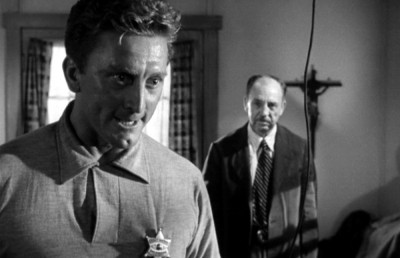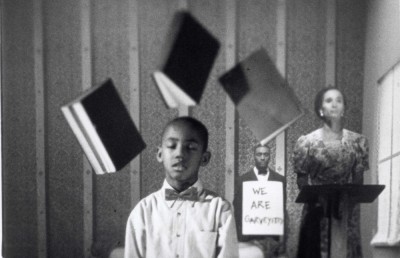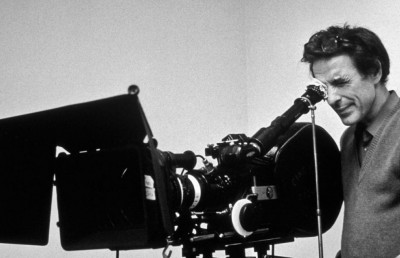Running the Lunatic Asylum: Tracing the Grotesque Body in Jan Svankmajer’s Lunacy (2005)
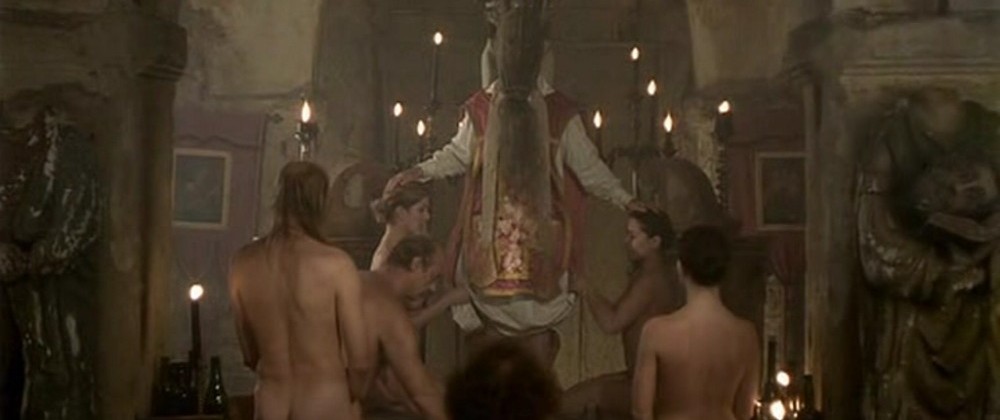
Despite Jan Svankmajer’s prominence within Czech surrealism and his numerous international festival prizes and accolades, his films have been relatively neglected within critical and scholarly circles. Peter Hames offers his medium of choice—the short film—as one potential explanation for this belated attention; “Svankmajer has only recently attracted major critical attention and this is partly due to the obscurity within which makers of short/animation films conventionally work […] and while [his] films won awards, they could still be contained within the ‘invisible’ world of the short film” (Goulding 131). Yet for those who are familiar with his oeuvre, Svankmajer is recognized for his unsettling use of stop-motion animation and pixilation (the process of animating three-dimensional objects, animals, or people through stop-motion cinematography) to reproduce and distort the human body (White and Winn, accessed online). Thompson and Bordwell contend that Svankmajer’s images both repulse and engage spectators because of their dark connections to the unconscious; “Every object has a rich texture and tactile appeal, yet the events follow the illogic of dreams. Slabs of meat slither about; antique dolls are ground up and boiled into soup; faces in old prints stare enigmatically as enraged puppets smash each other with mallets” (ibid). This interest in the physicality of the body and its relationship to regimes of power remains consistent throughout his short and feature-length films. Drawing on diverse inspirations including Surrealism, the writings of Lewis Carroll, Edgar Allan Poe, and Marquis de Sade, and traditional Czech puppet theatre in his work, his images provoke both horror and fascination.
The small body of critical writing that has been undertaken on Svankmajer’s films often limit the analysis to their value as commentaries on the politics of the pre-1989 communist Czechoslovakia. Svankmajer’s recent film Lunacy (Jan Svankmajer, 2005), completed well after the fall of the Soviet Union, does on the one level critically engage with capitalist power structures through his preoccupation with consumption and individual liberty. Svankmajer blatantly presents this critical position in the opening shot of Lunacy. The film opens to a white screen, with only the non-diegetic clacking of a 35mm film projector audible. The camera tilts down immediately to position Jan Svankmajer himself in the center of the frame. As he begins to speak in Czech, another male voice provides a simultaneous translation over his voice in English. “Ladies and gentlemen,” the voice intones, “what you are about to see is a horror film, with all the degeneracy peculiar to that genre. […] Our film may be regarded as an infantile tribute to Edgar Allan Poe, from whom I borrowed a number of motifs, and to the Marquis de Sade, to whom this film owes its blasphemy and subversiveness.”
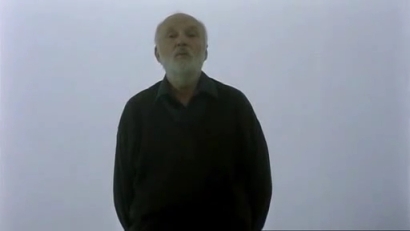
In identifying his use of Poe and Sade in his preamble, Svankmajer is both establishing a criticism of contemporary politics through his cinematic adaptation of their writings and diverting the audience with a red herring. Svankmajer claims the “subject of the film is essentially an ideological debate about how to run a lunatic asylum” with the power dichotomy between “absolute freedom” and “control and punishment.” Underscoring his metaphor of the lunatic asylum for the Western liberal capitalist state, he remarks that there is “also a third [way] that combines and exacerbates the very worst aspects of the two. And that is the madhouse we live in today.” Svankmajer’s use of Sade to create a political critique places Lunacy in direct dialogue with Pier Paolo Pasolini’s Salò o le 120 giornate di Sodoma (1975). Pasolini adapted both the graphic violence and perverse sexuality of the subject matter and the use of repetition as narrative structure from Sade’s The 120 Days of Sodom (1785) to critique the totalitarian state of Italian fascism established under Benito Mussolini. The use of storytelling as a motif by the four bordello mistresses in Salò rhythmically structures the film narrative. Svankmajer similarly structures Lunacy in four distinct sections marked by repetitive and rhythmic animated interludes of fragmented body parts. Unlike Pasolini, however, Svankmajer does not wallow in the visualization of physical torture as a means of subjugation within totalitarianism but instead contemplates extreme individualism and religious blasphemy as means of liberating the self from strict power structures.
Although Lunacy offers itself as a political commentary, Svankmajer playfully obfuscates his secondary interests with the grotesque body and its functions by diverting the audience with the most immediate layer of this cinematic palimpsest. Contending that it is simplistic to read Svankmajer’s films purely as political allegories, O’Pray makes a similar argument, claiming that Svankmajer’s films instead “reassert the freedom of imagination and the possibilities of art within a popular mode” through his use of the grotesque (O’Pray 258). While he speaks of the Marquis de Sade, the writings of Edgar Allan Poe and madness, Svankmajer also cleverly expresses his preoccupation with the grotesque and fragmented body in purely visual form. Interrupting his speech during the opening shot, Svankmajer glances down to the bottom right corner of the film frame, as if his attention is suddenly caught by the faint squishing sounds, increasingly audible over the hum of the film projector. A moment later the film cuts to a medium-close up shot of a large cow tongue inching across a wooden surface like a resurrected worm. This second shot exhibits Svankmajer’s signature animation style, mediating repulsion with the body with dark humor.
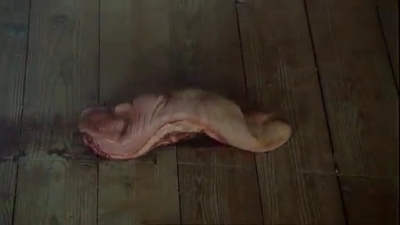
While no hint of a smile can be discerned on his face when the film returns to the previous shot and he resumes speaking, this quick interlude of the cow’s tongue establishes both a visual motif of the animated, carnivalesque sequences that interrupt the greater narrative arc throughout the film and Svankmajer’s application of Mikhail Bakhtin’s literary concept of the grotesque body. While images of grotesque, gaping, and fragmented bodies pepper the film, its animated interludes most clearly reveal Svankmajer’s positive conceptualization of the body and link the materiality and physicality of the objects used in Svankmajer’s animation with the physicality of the body in Bakhtin’s analysis. Like Bakhtin, Svankmajer privileges the physicality of the body through the visual depiction of the body on screen (accompanied only by carnivalesque music and diegetic sounds connoting movement) over the intellect and spoken word. Thus his construction of film form speaks to content in Lunacy, augmenting the importance of the body over that of Sade or Poe to the construction of this cinematic text.
Before delving into an analysis of Bakhtin, I would like to include a quick comment about the narrative, rather than formal, structure of Lunacy. The narrative is structured through literary adaptation into four distinct narrative arcs, with each of the segments further fragmented by the insertion of stop-motion interludes related to, though distinct from, the four arcs. The first section of the film is the aforementioned preface in which he merely lays out his literary inspirations. The second narrative, however, is loosely based on the writings of Marquis de Sade. The protagonist Jean Berlot experiences psychotic fits and meets a mysterious figure known only as the Marquis. The Marquis then invites Jean to his house where he witnesses a blasphemous spectacle of fornication and religious mockery in a church by night. Svankmajer’s adaptation of “The Premature Burial” (1844) by Edgar Allan Poe marks the third narrative, in which Jean is forced to help bury the Marquis after he dies over breakfast only to discover that the Marquis is alive and merely participates in mock burials as a “preventative therapy” for his fear of being buried alive. The final narrative section of Lunacy is also based on the plot of a short story by Poe entitled “The System of Doctor Tarr and Professor Fether” (1845). After another psychotic episode, the Marquis brings Jean to a sanatorium for therapy only for Jean to discover that a few crafty mental patients overthrew the doctors and now run the sanatorium. The film ends with a return to the proper hierarchy within the hospital and Jean’s second realization of the true madness of the doctors.
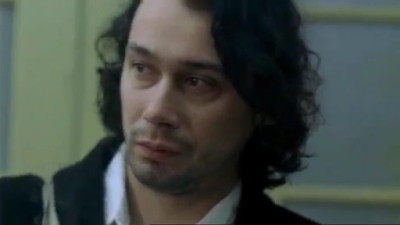
Jean
While the film narrative is clearly composed of several literary adaptations, the motivations for the construction of his Surrealist images, as well as the physicality and materiality of these images, comes from Bakhtin’s concept of the grotesque body. In Rabelais and His World (1984), Mikhail Bakhtin analyzed the role of the medieval body in François Rabelais’ Gargantua and Pantagruel from the sixteenth century, arguing that Rabelais’ depiction of the grotesque body, the communal banquet, and the carnivalesque exhibited a positive construction of the material body and its functions. Bakhtin presents the grotesque body as one that is materially associated with: 1) the lower stratum of the body, 2) open orifices such as the mouth, ears, nose (doubles for the phallus), and anus, and 3) with physical bodily functions—reproduction, copulation, defecation, and consumption. By lowering everything relating to an individual to the “material bodily level,” hierarchical distinctions are upended and natural social order is destroyed. While this transgression of binaries, such as the sacred/the profane, elevation/base, spiritual/material, is a unifying thread throughout Bakhtin’s literary analysis, it is especially evident in the body’s relationship to authority and sections of the body (Bakhtin 285). Bakhtin traces the relationship between hierarchies, the external world, and the grotesque body through the transformation of objects via a connection to the lower stratum. Citing the example of the belfry, which comes to double as a phallus both in its image and its metaphorical ability to impregnate women (pointing to the failure of monks to maintain their chastity), Bakhtin contends that specific objects are degraded and fused with the grotesque body and its corporal functions (311).
Exaggeration, hyperbolism, and excessiveness are also fundamental attributes of the grotesque style according to Bakhtin (303). The grotesque body is constantly in a state of “becoming” as it incessantly conceives itself anew through exaggeration, dismemberment, and consumption (381). The anatomization or fragmentation of the body either through comic enlargement (such as of the ears) or grotesque dismemberment is another means through which the body evolves. The fragmentation of the grotesque body also witnesses the enlarging of parts (stomach, bowls, phallus) during the consumption of food and wine at the communal banquet feast.
It is through the consumption of food and drink that the close interconnections between Bakhtin’s concept of the banquet and the grotesque body are laid bare. Bakhtin traces banquet imagery of popular medieval festivals—“food, drink, [and] swallowing”—in Rabelais’ work to the openness of the grotesque body, with its gaping mouth “on the borderline between body and food images” and the “fusion of the devouring and devoured body” (279). Physical engorgement of this devouring body through the banquet’s abundance of food and drink is then re-connected to the body’s fecundity and procreation. Ultimately, the action of eating collapses barriers between the physical body and the external world surrounding it as the body literally transgresses “its own limits: it swallows, devours, rends the world apart, is enriched and grows at the world’s expense” (281). Through the grotesque body’s relationship with the cycles of birth and death, consumption and regeneration, Bakhtin views the grotesque body as a positive one that embraces the materiality and baseness of the human body with transgressing boundaries and upending hierarchies.
Bakhtin’s concepts of the grotesque body and the banquet presented in Rabelais and His World are traceable throughout Lunacy in both the motivations for Svankmajer’s imagery and in the very materiality of his animations that punctuate the narrative. O’Pray contends that Svankmajer’s artistic inheritance lies in literature and art as much as it does in film studies. He contents: “more is to be gained from a study of writers like Schulz, Kafka, de Sade and Mikhail Bakhtin and of painters like Arcimboldo, Hieronymous Bosch and Max Ernst than from most contemporary film theory and criticism” (O’Pray 253). While all of Svankmajer’s films explore the physicality of the body, Lunacy is particularly rife with grotesque imagery depicting the consumption of food, gaping mouths, distended bodies, and opened bellies. The concept of the grotesque body can also be understood as a motivating factor in the construction of characters and key imagery in the film. The central and ambiguous figure of the Marquis, for instance, transforms into an open body at several points in the film when he laughs harshly at others’ emotional distress. Throwing open his mouth to reveals his teeth, his mouth is extended grotesquely thereby externalizing the inner space of the mouth and throat. He also performs his sudden “death” by seemingly choking on a banana, the fruit’s phallic shape highlighting both the seductive nature of death, and the sublimation of sexual desire through the consumption of food.
The key scene of the unholy mass at the chapel by night also uses consumption—in this instance at the banquet gleefully and perversely doubling for the Last Supper—to upend social and institutional hierarchies according to Bakhtin’s model. Led by the Marquis, four women devour chocolate cake seated in front of a Catholic alter, wantonly smearing the cake across their mouths to invoke a substitution of the cake and the hungry mouth for feces and the anus. They follow this banquet with a sexual orgy as the Marquis hammers nails into a crucifix, transforming Jesus’ body into a grotesque canvas of metal complete with an engorged phallus. In this performance of religious blasphemy, the institutional hegemony of the Catholic Church is not only turned upside-down through buffoonery and sexual excess but the lower stratum of the body takes precedence through the celebration of its functions (sexual intercourse, digestion of food, and defecation).
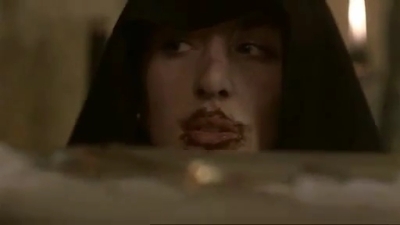
The language of the grotesque body and the carnivalesque also appears in Svankmajer’s depictions of madness in Lunacy. Jean experiences numerous psychotic episodes, in which his fear of going mad was expressed in vivid nightmares of two insane asylum assistants climbing into his room by night. In his expression of this overwhelming fear, his own physiognomy becomes grotesque through his foaming, distended mouth and popping eyes. As he seemingly loses control over his body and is brought to an actual sanatorium by the Marquis, both the sanatorium and the body become sites of struggle. Whereas the imprisoned doctors—themselves made grotesque narratively through the tarring and feathering of their bodies and cinematically through the extreme close-up shots of their mouths as they devour clandestine sausages Jean brings them—desire to punish the liberal body in order to restrain and submit it to authority, the Marquis and Dr. Murlloppe recognize the Bakhtinian implications of the body allowed free reign. During the brief destabilization of the asylum’s hierarchy, the sanatorium becomes a vibrant manifestation of the carnivalesque. Like an ungoverned market place, chickens run wild through the corridors and patients pass busily, occupied by their own chaotic affairs. Individual liberty, a disregard for authority, and the parody of institutional figures all feature prominently in this scene (Bakhtin 353). Several men cavort through the asylum nude, while other patients splatter paint on a nude female patient with abandon or slide down the staircases. In this frenzy of action, the patients’ multitude of behaviours is all associated with the physicality of the unhindered body and individual choice outside societal confines. The figures of Napoleon and Lady Liberty are also parodied in the Marquis’ re-enactment of Eugène Delacroix’s canonical painting La Liberté guidant le peuple (1830) through the casting of Napoleon as a dwarf and another patient’s groping Lady Liberty’s (Charlotte’s) exposed boob during the performance’s tableaux. Like the scene at the chapel, the images of madness and of the sanatorium become potent, horrifying, and Surreal not only through Svankmajer’s juxtaposition of literary elements from Poe or Sade but through Bakhtin’s concept of the grotesque body.
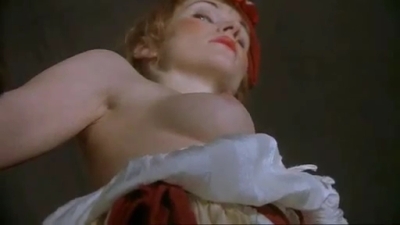
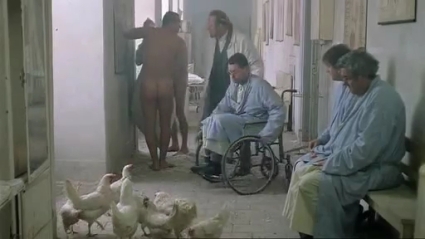
The struggle between punishing the body and liberating the grotesque body in the sanatorium also illustrates a paradigm shift from the medieval literary representation of the body in Rabelais’ work towards the controlled, modern representation of the Enlightenment or controlled body. Bakhtin asserts that the medieval “mode of representation of the bodily life […] differs sharply” from “the classical mode, as well as from the naturalist picture of the human body” (315). Whereas the grotesque body privileged the lower stratum and the public expression of the materiality of the body, the functions of the classical body related to sex, eating, drinking, and defection have been relocated into the private and individual sphere. Unlike the medieval body’s relationships to the cyclical nature of reproduction, death, life, and consumption, the body of the new Western literary and cultural canon consists only of “one body” lacking these signs of duality, and thereby interpretable without complexity (321). Svankmajer concludes Lunacy with the subjugation of Jean’s body in the sanatorium and apparent triumph of the institutional system designed to “punish the stronger body” in order to control the grotesque body’s physicality and functions under the sadistic control of Dr. Coulmiere. Although the character of Dr. Coulmiere provides an extreme metaphor of the suppression within the classical mode, the final shot of the film contradictorily belies and supports this paradigm shift away from the grotesque body.
The interludes composed of fragmented bodies, animated through Svankmajer’s characteristic stop-motion techniques, which periodically interrupt the film narrative, epitomize Svankmajer’s approach to the liberated and grotesque body. These Surrealist interludes consisted of muscles, slabs of meat, cow tongues, eyeballs, livestock brains, and entire taxidermy animals cavorting to carnivalesque music, alternatively performing with and against the main (primarily live-action) narrative arcs. A dead pig is butchered in stop-motion in the second animated sequence immediately following Svankmajer’s introduction, for instance, and a live chicken transforms into a dead one that is then cooked and devoured all in the same pan through the same animation technique. The clearest examples of this dialogue between the animated sequences and the live-action narrative are the wide copulation of two beef steaks juxtaposed against Charlotte’s sexual escapades and the tarring and feathering of meat pieces in mimicry of the patients’ actions against the original sanatorium doctors during their rebellion. While the images may appear disturbing or surreal, the freewheeling nature of these animations set to the repeating music of cheerful crank-organ reveals the positive and playful undertones in their unsettling appearance.
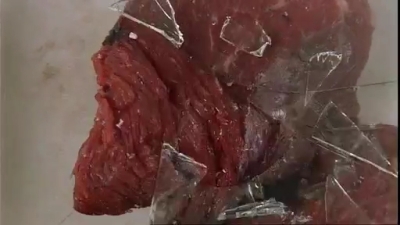
Animating meat
Svankmajer’s “fascination with the grotesque and the morbid” has a distinct formal relationship to his “explorations of surface materiality and texture” (O’Pray, 254). Like Bakhtin, Svankmajer privileges the grotesque body’s physicality though Svankmajer also conveys this physicality through the textual nature of his animated interludes. The positioning of the camera to frame the objects used in close-up and extreme-close up shots reveal the textuality of the surfaces. The visible bumps of the taste buds on a cow tongue, the fine precision of each strand in a chicken feather, and the glistening surface of an eyeball that quickly becomes dirty once it rolls over dusty floorboards are all placed in the forefront of these shots through the framing of the shot. To accommodate for the stop-motion animation process and further accentuate the material nature of these found objects, individual shots are also held for longer durations within the relatively brief animated interludes. All of these stylistic decisions link the materiality of the objects with the physicality of Bakhtinian body.
While the penultimate tracking shot of the film depicts rows of beef steaks, similar to those cavorting and copulating earlier in the film, trapped under plastic wrap in the meat aisle of a contemporary supermarket, these fragmented bodies are not completely subdued. Struggling to breath within the packaging (as seen in the final close-up shot of one packaged piece of meat) the animated cuts of meat, like the relationship between the construction of the film form and the visual content of the animated sequences, ultimately reaffirms the continuing relevance of the grotesque body in contemporary society.

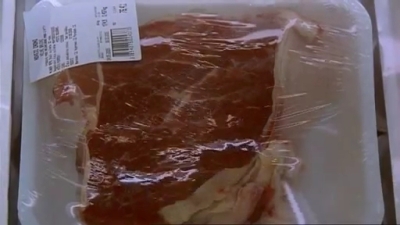
Jan Svankmajer emphasizes the body and its physicality throughout his cinematic oeuvre, but the narrative and cinematic privileging of Bakhtin’s grotesque body in Lunacy brings his fascination with the body to new depths. As eating and drinking are “the most significant manifestations of the grotesque body” (281), this link between the banquet, consumption of food, and the open or grotesque body shape both the motivations for key scenes and the very materiality of his animations. Although Svankmajer’s films are often analyzed in purely aesthetic contexts through his use of Czech Surrealist and cultural tropes or as political criticism of pre-1989 Czechoslovakia, Mikhail Bakhtin’s readings of the medieval body in Rabelais and His World open Lunacy to another, positive and liberating, understanding of the body and all its functions in Svankmajer’s imagery.
Bibliography
Daniel J. Goulding, editor. Post New Wave Cinema in the Soviet Union and Eastern Europe. Bloomington (IN): Indiana University Press, 1994.
Michael O’Pray. “Surrealism, Fantasy and the Grotesque: The Cinema of Jan Švankmajer.” James Donald, editor. Fantasy and the Cinema. London: BFI, 1989, 252-268.
Mikhail Bakhtin. Rabelais and His World. Bloomington (IN): Indiana University Press, 1984.
Tim White and J. Emmett Winn. “Tomorrow Could Bring Salvation: Jan Švankmajer’s Adaptations of Edgar Allan Poe.” Kinema: A Journal for Film and Audiovisual Media. Fall 2006, accessed online:
Filmography
Lunacy (Sílení). Dir. Jan Svankmajer. Czech Republic, 2005. DVD.
Salò: or The 120 Days of Sodom. (Salò o le 120 giornate di Sodoma). Dir. Pier Paolo Pasolini. Italy, 1975. DVD.


